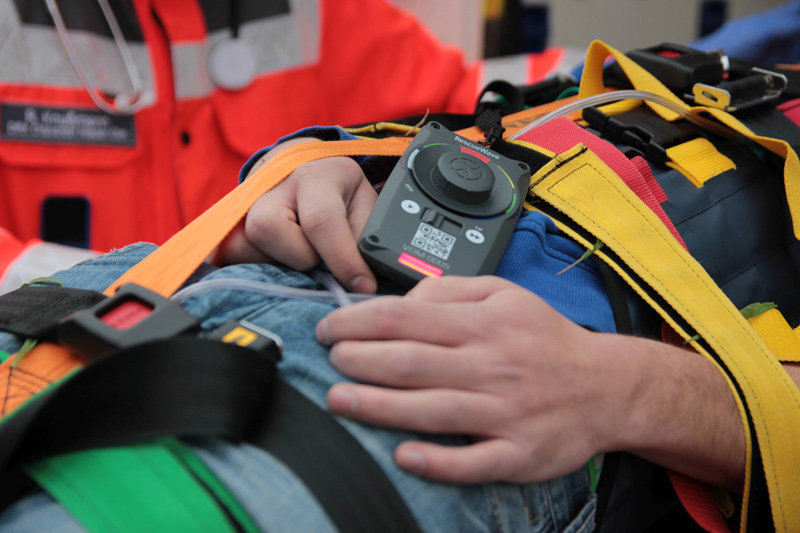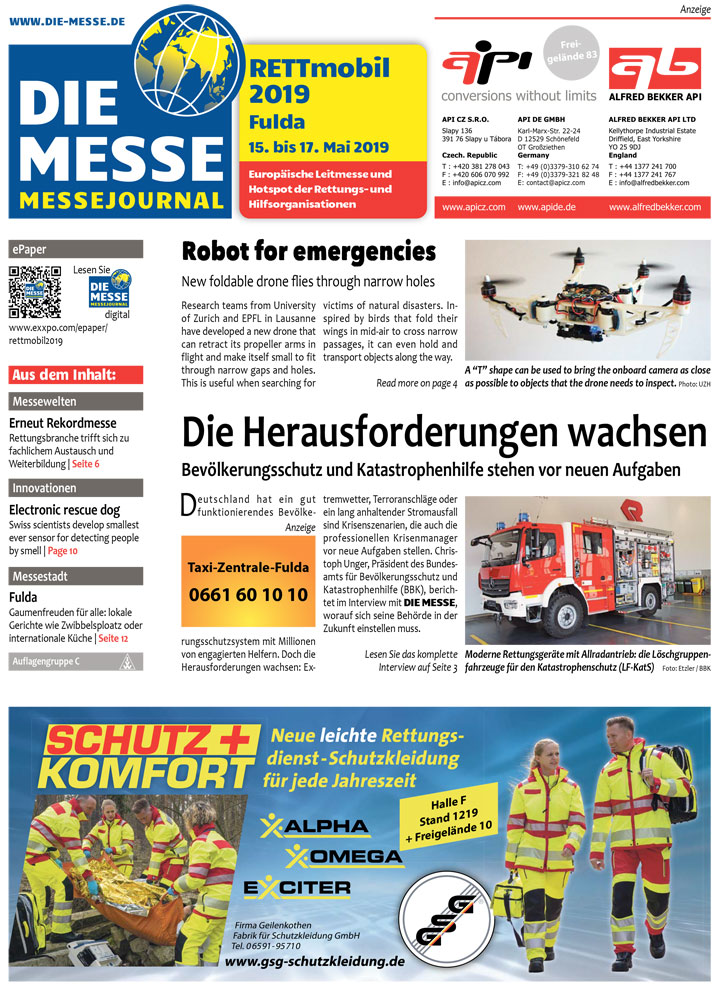16 May 2018
The idea comes from Karlsruhe Institute of Technology (KIT). Instead of cards, the emergency physician distributes electronic sensor devices, by means of which casualties can be localized automatically and patient information can be acquired and transmitted to the headquarter in real time. With the help of data from radio-networked devices and a software specially developed for emergency operations, the headquarter, even under most chaotic conditions, can coordinate vehicles and rescue forces on site and send them to the casualties as required.
Through networking, also hospitals, control centers, and crisis teams can be connected. The information gathered is available to the task forces and emergency management staff anytime. Cards, tally sheets, clip boards, and notebooks are no longer required. Misunderstandings are prevented. Decisions can be made more quickly and on the basis of reliable data.
It took more than ten years for the idea to be implemented. This was mainly due to the complexity of the problem, says Dr. Stephan Heuer, who coordinated system implementation and worked as a scientist at the FZI Research Center for Information Technology. “Technical systems for rescue services always are highly complex. In a situation of maximum stress, rescue forces must fully concentrate on their emergency care task proper,” he explains. “An assistance system must not ask the user to make unnecessary decisions. It must be clear and robust and intuitive operation must be guaranteed. The RescueWave devices, for instance, are designed for temperatures between -20 and +50°C and are splash-proof.”
The system has already passed a first practical test by emergency response units in the district of Germersheim, Rhineland-Palatinate. Professor Wilhelm Stork of KIT’s Institute for Information Processing Technology (ITIV) and Director of the FZI is confident that the system will prevail on the market. “At the RETTmobil 2017 trade show, this concept turned out to be an absolute hit. Several German cities and districts have already expressed their interest.”
https://www.kit.edu/
http://www.rettmobil.org/
“RescueWave”: Order instead of chaos
Presently, the order according to which people involved in a so-called mass-casualty incident are provided with first aid and transported to hospitals is being determined by a procedure initially used in military medicine. Coloured slingcards indicate the priority of a medical emergency. A new electronic system, called RescueWave, now is to enhance efficiency of operations.
 Photo: VOMATEC Innovations GmbH Photo: VOMATEC Innovations GmbHThanks to the intuitive system, rescue forces can concentrate on emergency medical care. |
Through networking, also hospitals, control centers, and crisis teams can be connected. The information gathered is available to the task forces and emergency management staff anytime. Cards, tally sheets, clip boards, and notebooks are no longer required. Misunderstandings are prevented. Decisions can be made more quickly and on the basis of reliable data.
It took more than ten years for the idea to be implemented. This was mainly due to the complexity of the problem, says Dr. Stephan Heuer, who coordinated system implementation and worked as a scientist at the FZI Research Center for Information Technology. “Technical systems for rescue services always are highly complex. In a situation of maximum stress, rescue forces must fully concentrate on their emergency care task proper,” he explains. “An assistance system must not ask the user to make unnecessary decisions. It must be clear and robust and intuitive operation must be guaranteed. The RescueWave devices, for instance, are designed for temperatures between -20 and +50°C and are splash-proof.”
The system has already passed a first practical test by emergency response units in the district of Germersheim, Rhineland-Palatinate. Professor Wilhelm Stork of KIT’s Institute for Information Processing Technology (ITIV) and Director of the FZI is confident that the system will prevail on the market. “At the RETTmobil 2017 trade show, this concept turned out to be an absolute hit. Several German cities and districts have already expressed their interest.”
https://www.kit.edu/
http://www.rettmobil.org/
More news about "RETTmobil":
17 April 2018
RETTmobil to return with 530 exhibitors from 20 nations
RETTmobil on growth course: At the 18th European Leading Exhibition for Rescue and Mobility, 530 exhibitors from 20 nations - more than ever before - and over 28,000 visitors are expected. An extensive and top-class training programme has been prepared with 11 workshops and 8 modules with 45 speakers. (more…)22 April 2016
RETTmobil 2016: “From Practice for Practice”
The course has been set for the 16th edition of RETTmobil from May 11 to 13, 2016. The central location of Fulda in the center of Germany with 70,000 square meters of exhibition space, 20 exhibition halls and a large open-air site at Messe Galerie Fulda again provides the conditions for RETTmobil. (more…)
| FAIR NAVIGATOR | |||||||||
|---|---|---|---|---|---|---|---|---|---|
|
| E-PAPER RETTMOBIL |
 |
